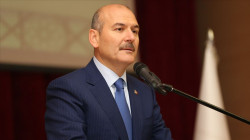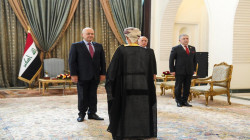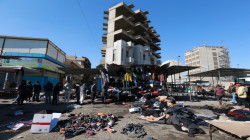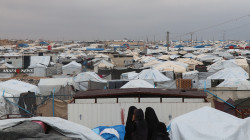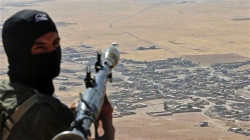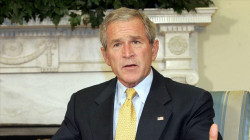Report: ‘They will never let go’: ISIS fighters regroup in the heart of Iraq
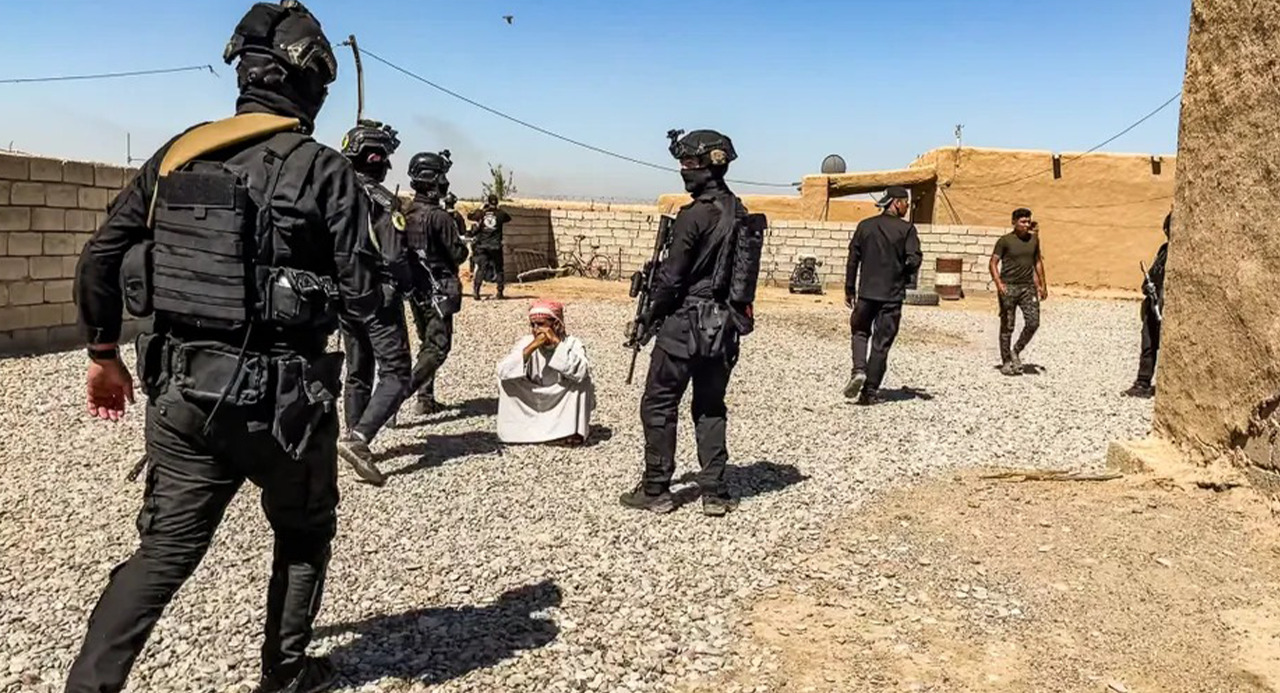
Shafaq News / A long convoy of humvees, trucks and troop carriers moved slowly through the countryside to the south of the city of Kirkuk, ferrying dozens of Iraqi special forces. Their target was a string of hideouts used by Islamic State militants in the rough terrain of hills and lowlands crisscrossed by canals and long-dried seasonal river gullies, or wadis as they are called in Arabic.
In the lead vehicle sat the commanding officer, a young lieutenant-colonel, Ihab Jalil, with a clipped moustache and hazelnut-coloured eyes. He charted the routes of the convoy on his tablet. At the same time, switching between three radio sets, he talked to the pilots of two helicopters that circled over the convoy, scouting the road ahead.
The night before, Jalil, the commander of the Kirkuk regiment of the Iraqi Special Operation Forces (Isof), had gathered his men at their base and briefed them on the mission: “Our intelligence reports say that Daesh [Isis] fighters are based in the mountainous areas in Hamreen, to the east of Kirkuk. During the summer months they have to move down to the wadis to get water. These wadis and gorges become their shelter and communication networks, connecting the villages in the lowlands to their bases in the hills,” he told the soldiers.
“The terrain is very difficult, and we know that they have multiple shelters hidden in these wadis and irrigation ditches. I want you to be very careful; I don’t want you to wander through them alone; you will lose your comrade if you move too fast.”
Four years after their astounding defeat in the battle of Mosul, Isis militants are regrouping. Small bands of fighters attack military and police checkpoints, assassinating local leaders and assailing electricity transmission grids and oil installations.
Their numbers are still a fraction of when the caliphate ruled large swathes of Iraq and Syria. Deprived of local support in cities and towns after the devastation they wrought upon communities, and unable to hold territory in the face of much superior government forces, they have resorted to a quasi-nomadic existence, according to local tribal leaders and intelligence officers. With their financial resources severely depleted, they seek shelter in the mountains and gorges and constantly move until enough resources and men are mustered to organise an attack.
A senior intelligence officer stationed in the region said that this area, a triangle of land between Kirkuk in the north, Baiji in the west and Samara in the south, is very important to the group. “It’s in the centre of Iraq and connects the hills and mountains in the east, a perfect place to hide, to the deserts in the west that would lead to Syria. They will never let go of this area.”
One tribal leader whose men had fought against Isis in this region said that although the militants’ numbers are small at the moment, they are working to recreate the conditions that allowed them to control the area. If they were left unchecked, they would soon manage to organise and regroup.
“Isis now are in the same situation as al-Qaida after their defeat in 2009,” the tribal leader said. “They went underground to regroup and reorganise; it took them less than three years to come back stronger.”
He said that the same conditions that had allowed Isis to manipulate local anger and garner support persists. “There is little or no trust in the government, and local communities are collectively punished and treated as members of Isis until proven innocent,” the tribal leader said.
The mutual suspicion between authorities and the people was on full display in the Kirkuk operation. The convoy of Iraqi special forces ploughed on slowly, the heavy humvees moaning and creaking as they climbed and fell through ditches and canals. They passed many villages, abandoned since the last war against Isis four years ago, their houses destroyed and their roofs flattened by explosives to prevent the inhabitants from returning.
Sometimes the convoy inched slowly behind mine-clearing soldiers, who walked ahead, inspecting broken pipes and abandoned sacks and looking for possible explosive devices.
Finally the humvees stopped on the outskirts of a small village: intelligence reports indicated that Isis’s deputy governor for the region, Mohamad Daham, came from here. Even after its losses and the killing of its senior leaders, Isis still maintains a hierarchy and appoints regional governors and commanders, whose job is to oversee provinces and regions that it no longer controls.
Platoons of soldiers, clad in black uniforms, their faces hidden under ski masks, descended and entered the village from different directions. They spread out between mud houses and animal pens, crouching in the shade of the walls, their guns pointing in multiple directions. Two snipers climbed over a barn and lay on its thatched roof, scanning the horizon. Dogs ran into the fields, barking and giving chase to the low-hovering helicopters.
The place looked deserted, like a long-abandoned movie set. In the centre sat an old tractor and some rusted machinery. In the haze of the early morning sun, the Earth, walls and even sky were all in shades of yellow and brown.
But it was not an abandoned village, and gradually the soldiers started rounding up the men there. They were made to crouch on the ground, their heads bent and faces lined against the wall. The women and children stood in nearby doorways, watching with the apprehensive looks of people well accustomed to almost two decades of interrogations and raids.
The lieutenant-colonel began questioning the men about the whereabouts of the deputy governor. One after another, they denied knowing him; some even claimed that they had not heard of his family.
Then, one man disclosed that Isis militants had passed through the village in recent weeks. “You have seen the ground here,” he said. “It’s all wadis and canals, so we don’t know when they come and leave.”
“Do you give them bread?” the lieutenant-colonel asked. “No sir,” replied the man instantly. “I haven’t seen them myself.” Then came the turn of one very thin man, wearing a mud-caked shirt and a red kufiya wrapped tight around his thin, emaciated waist. The lieutenant-colonel, who towered over him, ruffled his dirty hair filled with straw and mud, and asked him to stand up and face him. The man stood, visibly shaking and shifting his weight from one leg to the other. A scared grin grew on his face.
“Why are you scared? We won’t hurt you,” the officer said with a smile. “Talk; why are you scared? Who are you scared of?” The man replied: “I swear I don’t know him, but I know that his father was with the [Islamic] State, and his father is now in prison.”
The interrogation continued. “So you know nothing? Well, maybe you are one of them.” He turned to his soldiers and said: “Look how thin he is. Maybe we take him with us.”
Upon hearing this, the man began speaking again with a grimace of pain, telling the soldiers that many families had left when Isis was driven out. “Some are living in the mountains; at night the men come through the wadi and enter from there,” he said pointing to the far side of the village. “And then leave from this way.”
“Of course they want food, and they take what they want forcefully. We are tired and fed up,” said the man. “I swear by Allah we are fed up, the State [Isis] comes every night, and the government doesn’t do anything.”
Frustrated, the commander and his convoy left. He admitted he could understand the man’s fear. “They all know the deputy governor, they all know him very well – how could they not if they come from the same village? Yet at the same time no one wants to be seen talking to us, because they still fear Daesh, and they have the right – we are here for a few hours, and we leave, and the gunmen would come at night looking for supplies.”
He said part of the problem lay with local security forces that sat behind high walls in a fortified position above the hills, leaving the villages and fields unprotected. “The locals are trapped,” he added. “They have to deal with them [Isis] because they don’t have security forces to protect them.”
The convoy marched on, headed now towards a series of canals and ditches that Isis had been using as a makeshift shelter and communication network. Arriving at their targeted location in the afternoon, the convoy of Humvees formed an arc facing a network of irrigation ditches and leaching canals where metres-high reeds had grown.
The two helicopters circled overhead. One of the pilots said he could spot three men running. The helicopter swept down, lowering its nose and mowing the canal with heavy machine-gun fire, before arching into the sky and looping back for another attack. After a few rounds, a line of smoke rose from the middle of one canal, and the umvees advanced.
Soldiers walked to the bank and sprayed the bush with their machine guns, while another in the turret of one humvee fired grenades that popped with muffled explosions among the high reeds. A fire raged, and one soldier said that there was something flammable there.
The men waded into the thick bush and then the canal, parting the reeds with their guns, cold water reaching up to their waists and their feet sinking in the mud at the bottom. Small black insects landed on their faces and necks with stinging bites. Unable to see clearly more than a foot ahead of them, they walked through the water and mud, looking for the elusive enemy that had long run away, most likely scared off by the sounds of the approaching helicopter.
After a few hundred meters of combing the marsh, they came out near the site of the fire to find a metal bed frame nestled in the middle of the canal. It sat above the water, now covered in thick black slime of mud and ashes. Next to it was twisted metal mesh that had been used to create a shelter above the bed. Blankets and clothing were the cause of the fire.
Here, in the midst of this swamp, was where an Isis member – possibly more than one – had spent days or weeks waiting for the day when the group could rule again, the soldiers deduced.
“In reality, it is like looking for a needle in a marshland,” said Jalil. After looking through other canals, and not finding anything, the convoy moved again towards a nearby abandoned village where the team set up camp for the night. Signs of the previous war against Isis were apparent in the surrounding landscape: demolished houses, burned-out car skeletons, and electricity poles and facades riddled with bullets.
Fires were lit and food was cooked before the soldiers settled down for the night. Some soldiers slept on the roofs of their trucks or huddled inside their cars. Jackals enticed by the smell of food came to the edge of the camp, their cries rising, filling the cold night.
“Sir, do you know that these are the same kind of beds we saw earlier,” the deputy lieutenant-colonel, Ahmad Sultan, said to his commanding officer, referring to their makeshift sleeping arrangements. “I know,” came the reply. “And most probably Daesh used the same village as a camp, too.”
Source: The Guardian
